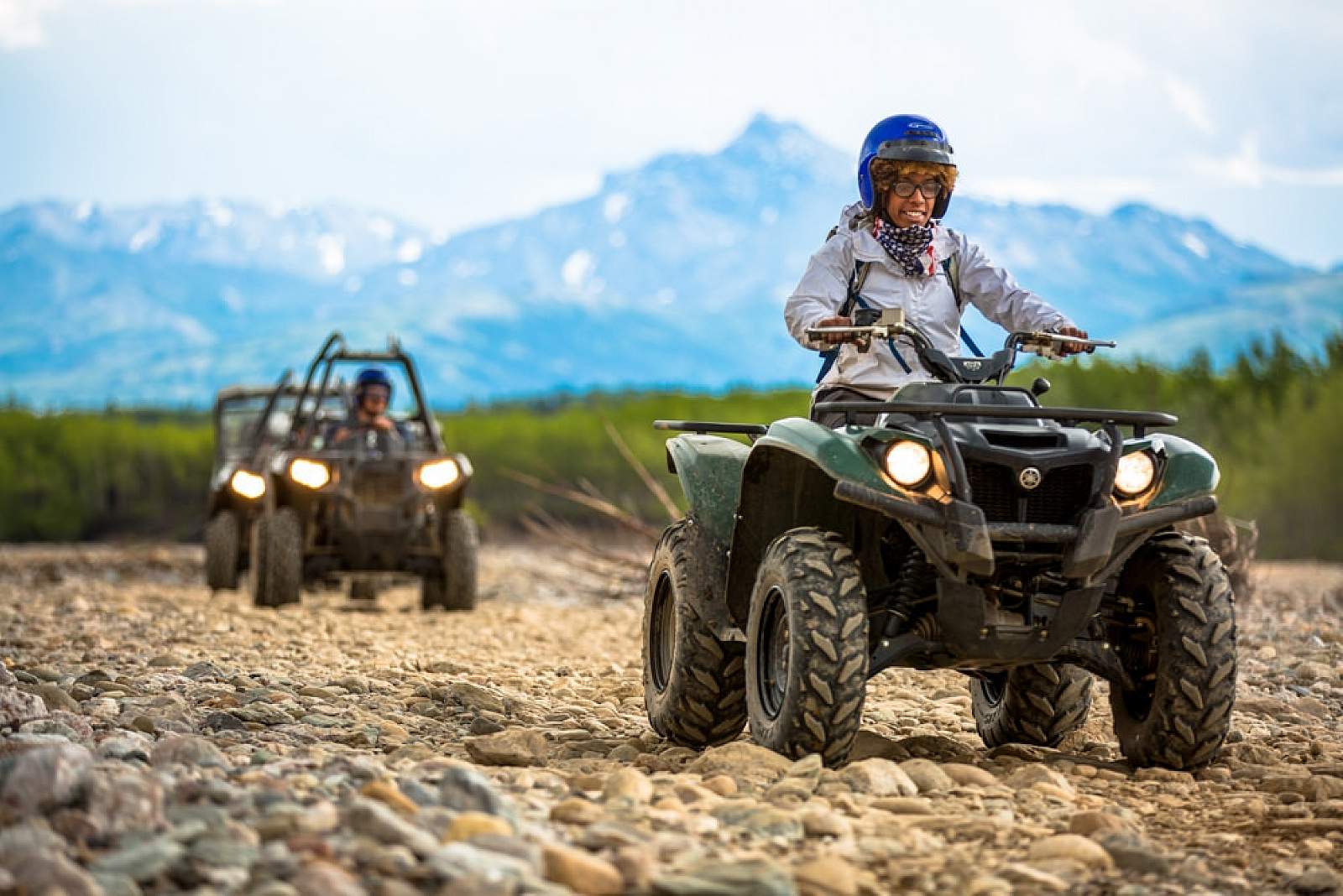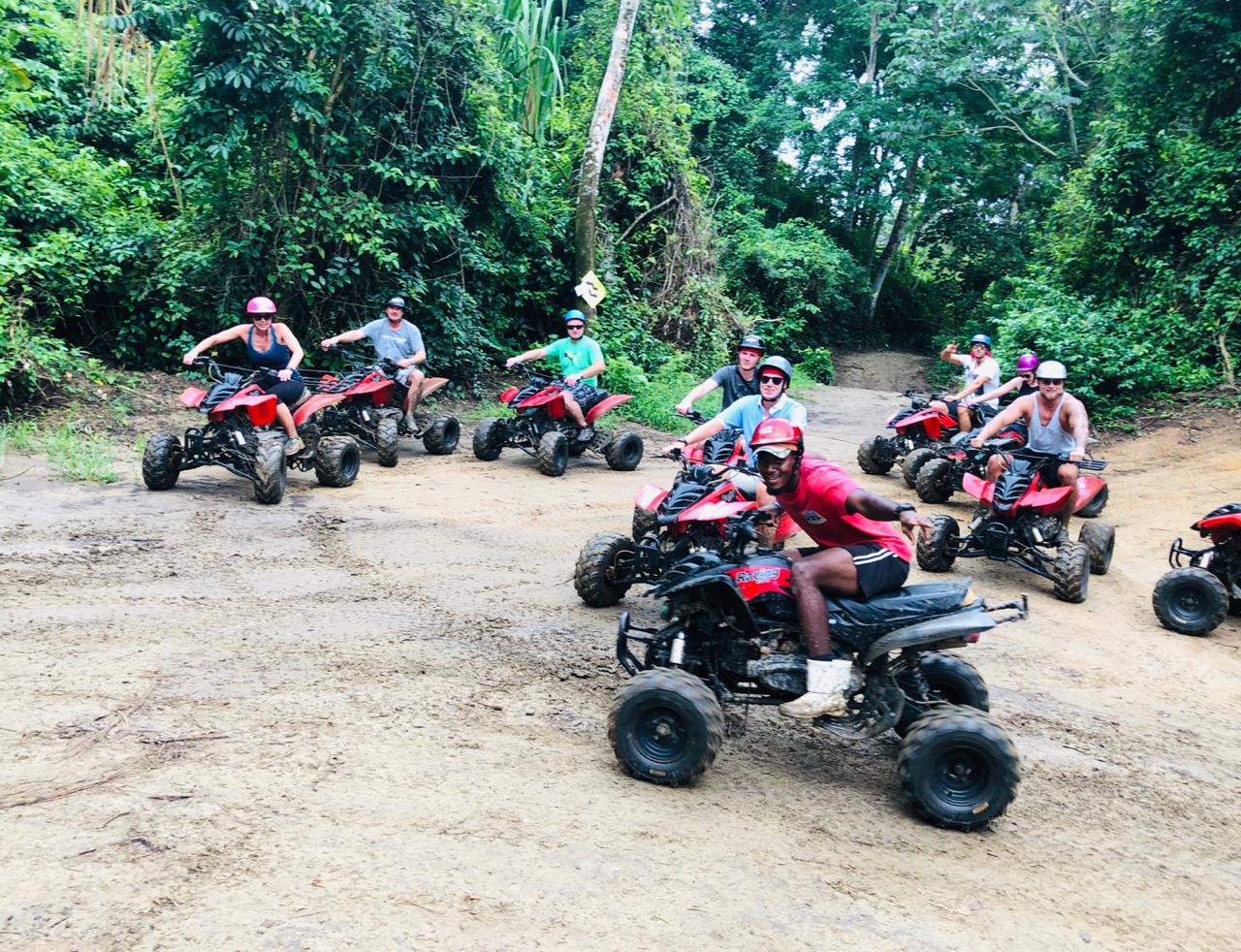Grasping the Trails: ATV Riding Tips and Methods
Understanding the Trails: ATV Riding Tips and Techniques is a detailed guidebook made to equip cyclists with the understanding and abilities required to navigate off-road surfaces with self-confidence and accuracy. This expertly crafted source delves right into different aspects of ATV riding, consisting of proper body positioning, browsing uphill and downhill routes, grasping limited turns, navigating barriers, and adopting necessary security precautions. Composed in a specialist style, this guide stresses the significance of technique and supplies practical advice for bikers of all degrees. With a focus on safety and ability growth, Grasping the Trails is an essential for ATV fanatics wanting to improve their riding capacities and tackle any kind of route with finesse.
Value of Correct Body Positioning
Correct body placing is important for maximizing control and stability while riding an ATV. When riding off-road vehicles like ATVs, maintaining the correct body placement is vital for attaining optimum control and security. By placing your body properly, you can effectively distribute your weight and navigate the ATV much more efficiently, enabling a safer and much more pleasurable trip.
One secret aspect of correct body positioning is keeping a well balanced pose. This indicates keeping your body upright and focused over the ATV in all times. By doing so, you can equally disperse your weight between the front and rear wheels, which aids enhance grip and stability (atv). In addition, maintaining your body upright enables you to better take in bumps and shocks, lowering the influence on your body and improving general comfort.
Moreover, it is essential to grip the handlebars strongly and keep your arms a little bent. This setting enables better control and ability to move, as it enables you to promptly react to changes in surface or unexpected challenges. Maintaining your arms relaxed and a little bent likewise helps take in shocks and resonances, lowering fatigue and boosting overall control.
Tips for Navigating Uphill and Downhill Trails
When navigating uphill and downhill trails on an ATV, bikers have to employ tactical techniques to safely and efficiently maneuver through differing surfaces. This aids to protect against the ATV from turning backwards.

Mastering Tight Turns and Maneuvering Obstacles
To effectively navigate tight turns and maneuver obstacles on an ATV, bikers need to utilize efficient methods and maintain a focused method. When approaching a tight turn, it is essential to slow down and shift your body weight towards the within of the turn. This aids preserve equilibrium and control throughout the maneuver. Furthermore, leaning forward and gripping the handlebars firmly enables far better control over the ATV's guiding. It is necessary to bear in mind to look ahead, concentrating on the wanted course instead of focusing on the obstacles or the turn itself. By looking in advance, bikers can anticipate any possible challenges and adjust their speed and body placement as necessary - atv.
When it comes to maneuvering obstacles, such as rocks, fallen trees, or deep ruts, motorcyclists should approach them with caution. Keeping a loosened hold on the handlebars and permitting the ATV to relocate below you will assist maintain equilibrium and control. These strategies, paired with method and experience, will certainly enable riders to confidently navigate tight turns and get rid of barriers on their ATV journeys.
Essential Safety Safety Measures for ATV Riding
ATV riders need to prioritize sticking to vital security precautions to make certain a safe and pleasurable riding experience. see page These safety preventative measures are important in minimizing the risks associated with ATV protecting the cyclist and riding from prospective crashes or injuries.
Additionally, it is crucial to familiarize oneself with the ATV and its controls prior to riding. Comprehending just how to operate the lorry appropriately, consisting of stopping, increasing, and changing equipments, is necessary for maintaining control and preventing crashes. Checking the ATV's problem before each experience is also essential. This consists of evaluating the tires, brakes, lights, and various other components to ensure they are in excellent functioning order.

Strategies for Riding in Different Surfaces
Acquainting oneself with the strategies for riding in different surfaces is crucial for ATV bikers to browse different landscapes securely and successfully. Each terrain offers its own difficulties and requires certain abilities and techniques to ensure a smooth and regulated trip.
When riding on rocky and uneven surface areas, it is essential to keep a relaxed and balanced stance. Keeping your body flexible and loosened will certainly allow you to absorb shocks and preserve control over the ATV. In addition, it is important to preserve a consistent rate and prevent abrupt acceleration or stopping, as this can lead to loss of traction and prospective mishaps.
For sandy or sloppy surfaces, it is suggested to minimize tire stress to raise traction. Lowering the tire pressure enables the tires to grip the ground much better, avoiding the ATV from obtaining stuck. It is additionally a good idea to make use of a higher gear and preserve a constant rate to protect against the wheels from rotating and excavating into the terrain.
When riding on steep inclines or declines, it is essential to change your body weight onward or in reverse to preserve balance. Leaning forward while climbing up uphill will certainly stop the ATV from flipping backwards, while leaning backwards while descending will prevent the ATV from turning ahead. It is vital to utilize the suitable equipments and prevent unexpected acceleration or braking, as this can create loss of control and potential mishaps.
Conclusion
In conclusion, understanding ATV riding requires appropriate body placing, skilled navigating of uphill and downhill trails, and the capability to navigate limited turns and obstacles. By exercising these techniques and adhering to safety and security standards, ATV cyclists can why not check here boost their skills and delight in the routes to their greatest possibility.
When taking on downhill tracks, motorcyclists need to move their body weight backward to maintain security and protect against the ATV from turning ahead.To effectively browse tight turns and maneuver obstacles on an ATV, riders need to use reliable strategies and preserve a focused method.ATV cyclists need to prioritize adhering to critical safety precautions to guarantee a safe and enjoyable riding experience. These security preventative measures are crucial in decreasing the dangers linked with ATV protecting the rider and riding from potential mishaps or injuries. Leaning forward while climbing up uphill try this will avoid the ATV from flipping in reverse, while leaning backwards while descending will certainly stop the ATV from turning ahead.